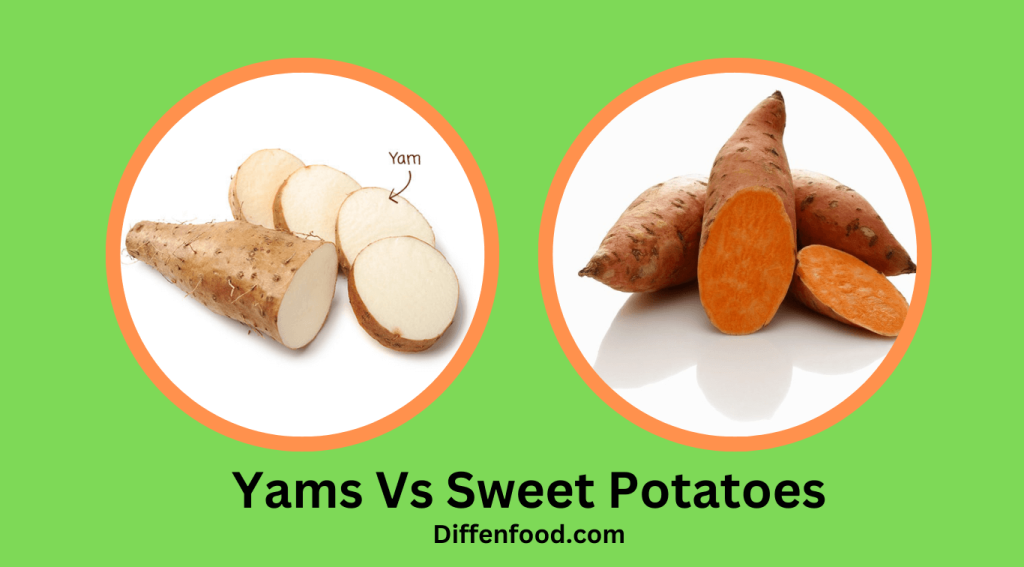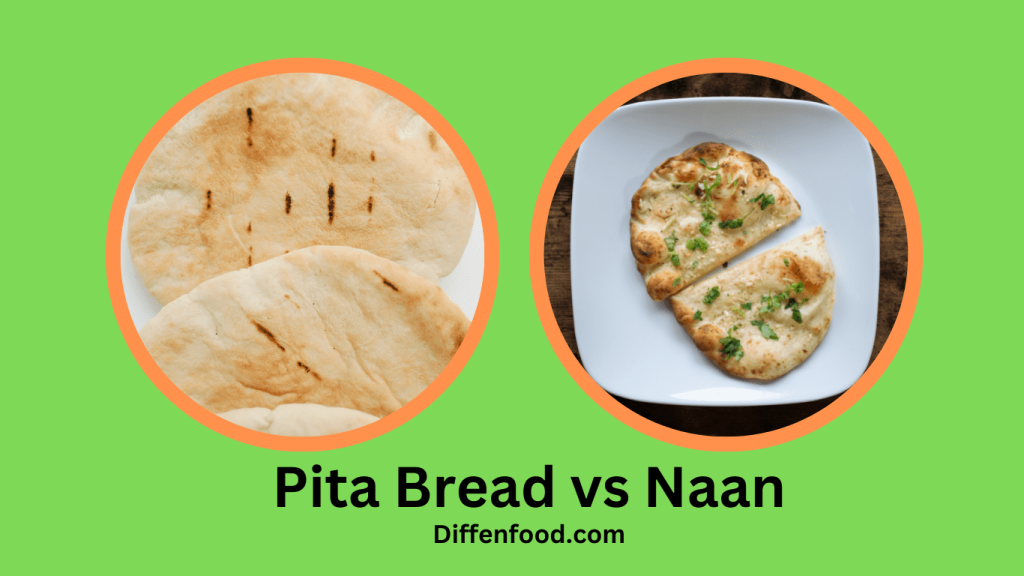
Many people often confuse yams and sweet potatoes, however, these are two separate species of root vegetables. While they share some similarities, they differ in appearance, taste, and nutrition. Get ready to discover more details about “Yams Vs Sweet Potatoes”.
What’s the Yams

Yams are starchy and slightly sweet root vegetables, originally from Africa and Asia, now widely grown worldwide and commonly used in dishes such as stews, soups, and pies.
Although often mistaken for sweet potatoes, yams are a distinct species of root vegetable.
They have a rough, scaly skin and are typically longer and more cylindrical in shape than sweet potatoes, which are smoother and more tapered.
Beyond their culinary uses, yams are a good source of fiber, potassium, vitamin C, and low in calories. Yams are a staple crop in many African cultures, serving as an important food source for thousands of years.
Yams are a versatile ingredient that can be enjoyed in various dishes. They can be roasted or served as a side dish.
Yams can add flavor and substance to a wide range of dishes. They are also highly nutritious. Yams can be used in stews, soups, and pies.
They are a great source of fiber, potassium, and vitamin C.
What’s the Sweet Potatoes

Sweet potatoes are a type of root vegetable that are commonly consumed in many parts of the world. They have a sweet, nutty flavor and a moist texture, and are often used in both sweet and savory dishes.
Despite their similarities in appearance, sweet potatoes and yams are actually two distinct species of root vegetable. Sweet potatoes have a smoother skin and are more tapered in shape than yams, which are longer and more cylindrical.
Sweet potatoes are available in a range of colors, including orange, white, and purple.
They are a great source of fiber, vitamins A and C, and potassium, and are relatively low in calories. T
hey can be boiled, baked, roasted, mashed, or fried, and are used in a wide variety of dishes, such as pies, casseroles, and fries.
Indigenous peoples in the Americas were the first to cultivate sweet potatoes, and they have been an important food source for many cultures for centuries.
Today, they are appreciated around the world for their flavor, versatility, and nutritional benefits.
Whether enjoyed as a side dish or a main ingredient, sweet potatoes are a delicious and healthy addition to any meal.
Yams Vs Sweet Potatoes: All the Differences Explained
People often mistake yams for sweet potatoes, but these two root vegetables actually differ significantly in terms of their appearance, taste, and nutritional value.
Difference In Appearance
In comparison, sweet potatoes are more tapered in shape and have a smoother skin that is easier to peel, while yams have a rough, scaly skin that is harder to peel.
Additionally, yams are more starchy while sweet potatoes have a moist and sweet flesh.
Difference In Taste
Yams have a subtle sweetness, but are generally less sweet than sweet potatoes.
Sweet potatoes have a distinct, sweet flavor that is more pronounced than yams.
People often use sweet potatoes in sweet dishes like pies and casseroles, while they tend to use yams more commonly in savory dishes like stews and soups.
Difference In Nutrition
Yams and sweet potatoes have different nutritional profiles.
Yams are higher in calories and carbohydrates than sweet potatoes, but are also a good source of fiber, potassium, and vitamin C.
Sweet potatoes are lower in calories and carbohydrates than yams, but are higher in vitamin A and antioxidants.
Difference In Cultural Significance
Yams are a staple food in many African countries, where they have been cultivated for thousands of years.
People often use them as an important part of cultural and religious ceremonies, and they frequently use them to symbolize wealth and prosperity.
On the other hand, sweet potatoes have a long history in the Americas, where they were first cultivated by Indigenous peoples.
They have become a popular ingredient in many cuisines around the world.
| Aspect | Yams | Sweet Potatoes |
|---|---|---|
| Appearance | Rough, scaly skin; longer and more cylindrical shape | Smoother skin; more tapered shape |
| Taste | Subtle sweetness; less sweet than sweet potatoes | Distinct sweet flavor; more pronounced than yams |
| Nutrition | Higher in calories and carbs; good source of fiber, potassium, and vitamin C | Lower in calories and carbs; richer in vitamin A and antioxidants |
| Cultural Significance | Staple food in many African countries; used in cultural and religious ceremonies | Long history in the Americas; popular ingredient in many cuisines around the world |
| Best Use | Popular in savory dishes such as stews and soups | Used in sweet dishes such as pies and casseroles; can also be fried, roasted, or baked |
Which Is Better?

It ultimately depends on your personal preference and nutritional needs.
Yams are higher in calories and carbohydrates than sweet potatoes. But they are also a good source of fiber, potassium, and vitamin C.
Their slightly starchy texture and subtle sweetness make them a popular choice in savory dishes such as stews and soups.
Sweet potatoes have fewer calories and carbohydrates than yams, but are richer in vitamin A and antioxidants.
They have a unique, sweet flavor and a moist texture, and are often used in sweet dishes such as pies and casseroles.
However, they can also be fried, roasted, or baked.
Both yams and sweet potatoes have important cultural significance and are valued for their versatility in cooking.
It’s best to incorporate both of these root vegetables into your diet to take advantage of their unique nutritional profiles and flavor profiles.
Conclusion
Yams and sweet potatoes are two different root vegetables with differences in taste, appearance, nutrition, and cultural significance. The choice between yams and sweet potatoes depends on personal preference and nutritional needs. Incorporating both of these root vegetables into your diet can provide unique flavor and nutritional benefits.
FAQ
While they can be used interchangeably in some recipes, yams and sweet potatoes have different textures and flavors that may affect the final outcome of the dish. It’s best to choose the appropriate root vegetable based on the recipe.
Both yams and sweet potatoes are typically cooked before consumption, as they are difficult to digest when raw and may contain harmful toxins.
Yams and sweet potatoes can be prepared by peeling and cutting them into desired shapes, such as cubes or wedges, before cooking. They can be boiled, baked, roasted, fried, or mashed.
Yes, yams and sweet potatoes can be frozen for later use. However, they should be blanched first to prevent discoloration and loss of flavor and nutrients.
Yams and sweet potatoes can be boiled, baked, roasted, fried, or mashed. They are often used in savory dishes like stews and casseroles, but can also be used in sweet dishes like pies and desserts.


